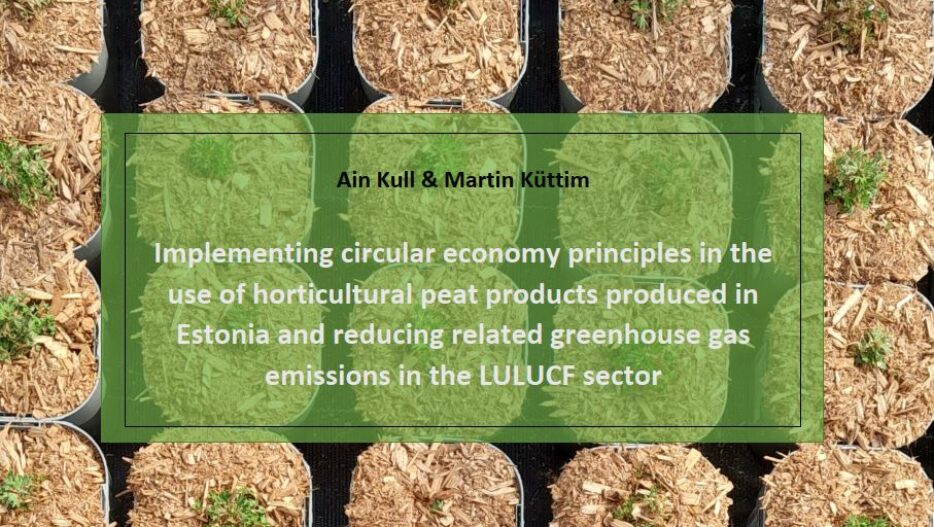
30 per cent of the carbon in horticultural peat never decomposes: New research data overrules the current calculation model for emissions from horticultural peat
For decades, the world’s life-cycle emissions of horticultural peat have been calculated incorrectly and very badly wrong. At the European level, the calculation errors cumulatively amount to hundreds of millions of tonnes of CO2 equivalent. What is the reason for such a calculation error? About the fact that you have only assumed something and no one has seen fit to investigate what is false and what is true.
Now it has been studied. Ain Kull, Associate Professor of Physiography at the University of Tartu, and Dr. Martin Küttim, a researcher at Tallinn University, have published a study submitted for peer review, which examines emissions from peat production in Estonia as part of the LULUCF sector. The study reveals many glaring errors in the calculation of horticultural peat.
The first mistake is that, in the calculation of emissions according to the current IPCC rules, the carbon contained in horticultural peat is released one hundred percent as soon as the horticultural peat has been lifted from peat harvesting area and before it has been processed into growing media for growing vegetables, flowers or tree seedlings to be planted in forests. According to the study, the majority of the horticultural peat used in greenhouses is transported to fields and landscaping sites as a soil improver. The carbon in peat decomposes by about 2% per year. After the first year, the calculation error is 98%. Even with a worse head in mathematics, you can say that the calculation is completely wrong.
Hundreds of millions of tonnes of carbon have been exported from the Baltics, Finland and Sweden over the past decades to every place where peat-based growing media has been exported, and it has improved the carbon balance of these countries. And it will improve permanently, because according to a published study, 29% of the carbon added to fields as a soil conditioner with peat is permanently bound to the soil. So at the end of the life cycle, there is a 29% error, which is also huge.
The current emission calculation model for horticultural peat is borrowed directly from the calculation of emissions from energy peat, and it is not suitable for that. Studies show that even a small addition of carbon to the soil improves crop yields and forest growth, so this positive effect of used growth peat recycled as a soil conditioner on the carbon balance of countries has also been completely ignored.
So why has the calculation been done incorrectly? There are few peat-producing countries in the world, most substrate manufacturers do not produce their own peat raw material, and there has been no demand for fact-based calculations before. It has been easier to use the old simplified models, and changing international calculation models always requires unanimity. One could even argue that the current incorrect calculation models are better suited to the ideological needs of some than fact-based ones.
The study now published deals with Estonia, but the situation is the same in Finland. Hopefully, this study will find its different way to the desks and hands of Members of Finnish Parliament and people in charge of ministries. Local research is needed so that Finland can pursue its own cause and so that future LULUCF targets are determined on the basis of correct emissions and not on figures that are already known to be wrong in advance.
Read the whole study: Kull & Küttim 2024.